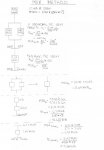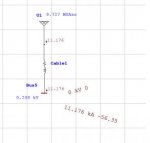BatmanisWatching1987
Senior Member
- Location
- NJ
- Occupation
- Jr. EE
Awesome. Thanks for the help
Now how do I add the 600 AMP MDP Panel to Busmann to the system since I will need to add another Panel which is about 150 ft away (225 AMP)
Do I select Bus Run and select add as feeder with the distance of 100 ft
FYI...I just need the hand calculation and I got 18074.
Now how do I add the 600 AMP MDP Panel to Busmann to the system since I will need to add another Panel which is about 150 ft away (225 AMP)
Do I select Bus Run and select add as feeder with the distance of 100 ft
FYI...I just need the hand calculation and I got 18074.




